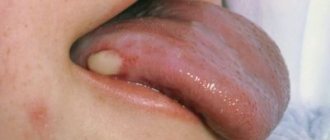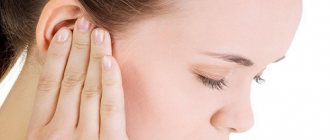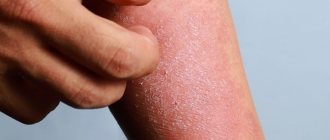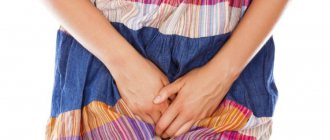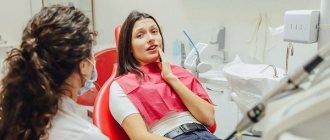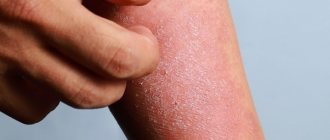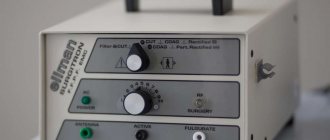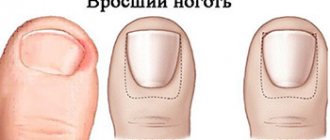Pemphigus symptoms
The characteristic symptoms of pemphigus are a rash of small blisters with serous contents. Their localization depends on what form of the disease develops:
- ordinary - rashes appear on the mucous membrane, accompanied by an unpleasant odor;
- leafy – blisters form on the skin, and crusts form at the same time;
- non-acantholytic - rashes are located on the mucous membrane and lips. This form of pathology is more often diagnosed in old age.
With pemphigus in children and adults, the following are also observed:
- severe weakness;
- increased drowsiness;
- deterioration or complete loss of appetite;
- losing weight even while eating high-calorie foods.
To detect pemphigus in newborns, older children and adults, the following examination methods are used:
- examination of the patient and assessment of rashes;
- Nikolsky test - with its help, differential diagnosis with other skin diseases is carried out;
- histological and cytological examination.
The symptoms of pemphigus (the second name of the disease) are often similar to the symptoms of other pathologies that will require completely different therapy. Therefore, before prescribing treatment, a thorough study of the symptoms that have arisen will be required.
Coxsackievirus in children: herpangina and hand-foot-mouth disease
Authors : Medscape Medical News
Among enteroviral diseases, the two most common forms are hand-foot-mouth disease and herpangina.
Atypical manifestations of enterovirus rashes are much less common and can imitate rubella, scarlet fever, Kawasaki disease, sudden exanthema and many other diseases, however, even with an atypical course, upon closer examination the child still has aphthae in the mouth or pharynx, and/or typical dense blisters on flexor surfaces of the palms and feet. It is these typical manifestations that allow a correct diagnosis to be made.
The subject of our consideration will be the typical forms of manifestation of these enteroviral diseases.
HAND-FOOT-MOUTH DISEASE
The name of this disease comes from the English Hand, Foot and Mouth Disease (HFMD).
Hand-foot-mouth disease (HFMD) is caused by the Coxsackievirus, a member of the enterovirus family. HFMD most often affects children under 10 years of age, but people of any age can get the infection.
Symptoms
The disease is manifested by fever (high temperature) and red spots with blisters in the center. Most often, the rash with HFMD is located in the mouth (tongue, gums), arms and legs (hence the name of the disease), but can also affect the buttocks, especially the perianal area, and appear as single elements on any part of the body. Typically, HFMD lasts about 10 days, with incidence typically peaking in late summer and fall.
Contrary to popular belief, your child cannot get HFMD from animals.
Treatment
- There are no antiviral drugs that can suppress enteroviruses.
The body copes with this disease on its own. The essence of treatment is to alleviate the child’s symptoms, prevent dehydration and identify complications.
- A child's fever can be relieved with drugs based on ibuprofen or paracetamol, and they can also be taken to relieve pain in the mouth. You just need to consult your doctor about the optimal dose and method of administering the drug.
Never give your child aspirin without a doctor's permission - aspirin provokes the development of an extremely serious disease - Reye's syndrome.
There are recommendations for the use of lidocaine gels for local anesthesia of ulcers and inflammation in the mouth.
Daily regime
If your child feels tired or sick, you should allow him to rest as much as possible. If the child is energetic and cheerful, then you should not insist on rest; let him play and spend the day as usual.
Nutrition
If a child has painful mouth sores, he or she will likely eat less or stop eating and drinking completely. It is important not only to relieve pain from the rash, but also to offer him pureed, easily digestible foods that do not irritate the oral mucosa. These include yoghurts, puddings, milkshakes, jellies, purees, etc. It's best to eat these foods cool or at room temperature, not hot.
Do not give your child spicy, salty or sour foods. There is no need to feed him citrus juices and carbonated drinks. These fluids can make your child's mouth feel worse. Offer to drink from a cup rather than a bottle—negative sucking pressure also increases pain and promotes mucosal trauma and bleeding. Drinking through a straw is safe - it can be a complete alternative to a bottle, especially for aphthae on the lips and tip of the tongue.
Children's institutions
The child can return to the children's group after normalization of body temperature and general condition, but the main indicator will be the disappearance of elements of the rash. Until this moment, going out in public is not advisable, since the child may be contagious to others.
Contact your doctor if:
- The blisters filled with pus or became sharply painful. This may be a sign of a secondary infection.
- Your child's mouth sores are so painful that he won't open his mouth and completely refuses to eat or drink.
See a doctor immediately or call an ambulance if:
- Your child is dehydrated due to complete refusal to eat or drink. We can talk about dehydration if: the child has not urinated for more than 8 hours
- the baby can feel a sharply sunken fontanel on the head
- baby crying without tears
- his lips are cracked and dry.
GERPANGINA
Herpangina is a viral disease that is caused by the same Coxsackie viruses and is manifested by the formation of painful ulcers (ulcers) in the throat and mouth, as well as severe sore throat and fever.
Herpangina is one of the common childhood infections. It most often occurs in children aged 3 to 10 years, but can affect people in any age group.
Herpangina symptoms:
- Fever
- Headache
- Loss of appetite
- Sore throat: constant or only when swallowing
- Ulcers in the mouth and throat, which may also be accompanied by isolated rashes on the legs, arms and buttocks (as in hand-foot-mouth disease).
- Aphthae usually range in size from 1 to 6 mm, are white or whitish-gray in color, with a red border around the edges. They can be very painful.
Usually no additional diagnostic methods are required - the doctor makes a diagnosis based on a physical examination and medical history.
Treatment
Treatment and care are similar to those described for hand-foot-mouth disease. Herpangina usually goes away within a week.
As with hand-foot-mouth disease, and with herpangina, the main complications are considered to be dehydration and aseptic meningitis. Therefore, you should closely monitor your child for signs of dehydration and headache levels, and consult a doctor immediately if you suspect complications.
Fortunately, complications are quite rare and most children recover within 10 days.
During a child’s illness, all family members must maintain careful hygiene: wet cleaning more often than usual, using dishes separately, frequently washing their hands and treating them with antiseptics.
published 08/08/2017 07:00 updated 10/08/2017 — Infectious diseases
Kinds
There are several main types of pemphigus. The most common form is pemphigus vulgaris, other variants are rare.
Ordinary
Pemphigus vulgaris most often affects middle-aged people due to a malfunction of the immune system. It can occur in a malignant form, resistant to all modern methods of treatment.
In advanced cases, the pathology leads to death.
Vegetative
With this form, the bubbles quickly burst, and gradually enlarging and often bleeding vegetations are found on the exposed bottom.
Leaf-shaped
Pemphigus of this type is rare in adults; children are more often affected. First, the skin turns red, resembling the picture of eczema, then flat and flabby vesicles appear. Quickly turns into large-lamellar dermatosis with areas of erythema and erosion. The resulting layered crusts resemble leaves, hence the name of the form.
Erythematous
Another name is seborrheic. This is due to the fact that the first foci of pemphigus appear on the head. Small bubbles appear, which dry out and turn into yellowish-gray crusts. Erosion is found underneath them.
Brazilian
This form of pemphigus is endemic. It is believed that the main cause of its development is a virus. Occurs at any age. Gives frequent relapses and complications.
Mechanism of bubble formation
Human skin can be figuratively described as a water-spring “mattress” covered with a kind of “wall”. The “mattress” does not participate in the formation of bubbles - only the top layer, the epidermis, suffers.
The epidermal layer consists of 10-20 cell layers, which look like bricks under a microscope. The “bricks” of the second layer of the epidermis are connected to each other by peculiar “bridges”. On top of the “wall” there are layers of cells that are no longer quite similar to cells, reminiscent of applied cream. These are scales, corneocytes, necessary for protection from mechanical, chemical and physical damage.
If, under the influence of internal or external causes, antibodies are formed that destroy the “bridges” - desmosomes between the cells of the basal layer (this is called acantholysis and can be seen under a microscope), this is true pemphigus. If tissue fluid penetrates between the basal and upper layers of the epidermis without destroying the “bridges,” it is pemphigoid. Viral pemphigus also occurs without destruction of desmosomes.
Complications
If viral pemphigus is not treated correctly, the following types of complications may occur:
- Formation of a chronic form of the disease;
- Infection of wounds with discharge of pus;
- Malfunctions of internal organs;
- Meningitis;
- Development of pneumonia;
- Major weight loss;
- Possibility of spots and scars after treatment of the disease.
Pemphigus can cover a child's entire body and cause other types of skin diseases that make the viral infection worse.
Causes
Pemphigus occurs against the background of acantholysis - the destruction of intercellular connections in the epidermis by antibodies, which causes the formation of blisters. This occurs due to a pathological reaction of the immune system against the background of a decrease in the body’s defenses. The exact cause of dermatosis has not been established.
In pemphigoid forms, connections between cells are preserved, but excess intercellular fluid pushes the cells apart, forming a vesicular rash. They are often called epidemic variants of skin lesions, due to the role of viruses and bacteria in the etiology. But an autoimmune factor is also present in the development of the disease.
How is epidemic pemphigus transmitted? A person becomes infected with the viral form during epidemics of respiratory infections. In this case, enteroviruses are transmitted by airborne droplets. If personal hygiene rules are not followed, the infection can be transmitted through contact, household, and fecal-oral routes.
You can become infected through contact with people from other regions and during trips abroad, when a person encounters an unfamiliar microbial background.
Among the bacteria, staphylococci and streptococci are dangerous. Most often, infants in the first 10 days of life are affected. Risk factors include: prematurity, birth trauma. Also, the infectious form of pemphigus can be transmitted if medical personnel have pyoderma.
There are factors that increase the risk of developing any variant of vesicular dermatosis:
- hereditary predisposition;
- autoimmune disorders;
- decreased immune defense;
- diabetes;
- oncological diseases;
- chronic ailments of various organs and systems in the stage of exacerbation or decompensation.
Disease prevention
To prevent the development of viral pemphigus, it is recommended to follow simple prevention methods:
- Children at any age should have their own personal hygiene equipment. This is especially true for toothbrushes, washcloths and towels. The towel must be changed every two days. Before this, iron the item at high temperature;
- You should maintain proper nutrition and exclude harmful foods. The diet should contain all the necessary vitamins and minerals to improve immunity;
- The children's room must be kept clean;
- Clothing must be clean and changed daily;
- Avoid contact with infected people;
- Maintain proper hygiene, especially after visiting public places;
- Treat all emerging diseases in a timely manner, do not self-medicate.
Following these simple preventive measures can reduce the likelihood of contracting viral pemphigus. However, parents should be aware that no one is protected from the risk of becoming infected with pemphigus.


